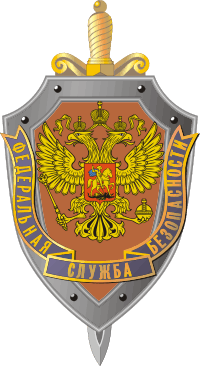
2A28 Grom
The 2A28 Grom is the main armament of the BMP-1 and BMD-1 infantry fighting vehicles. It is a 73 mm low pressure smoothbore semi-automatic gun with a wedge breechblock.
Description
The gun is relatively compact and weighs 115 kilograms (254 lb). In the BMP, the gun is brought to bear by an electric motor, with a manual mechanical backup. The maximum horizontal and vertical traverse speed with the electrical system is 20 °/s and 6 °/s respectively. Minimum horizontal and vertical direction rate is correspondingly 0.1 °/s and 0.07 °/s. The gun can be depressed and elevated between −4° and +33°, with aimed fire possible up to an elevation of +15°. The turret can traverse 360°. Cyclic rate of fire is between 8 and 10 rounds per minute, with the gun returning to an elevation of +3° 30' to reload after each shot if the autoloader is used.
It is fed from a forty round mechanized conveyor double-row magazine located around the turret ring of the BMP. The gun is reloaded by the M3 electromechanical autoloader with ammunition conveyor, but can be reloaded by hand if necessary. The autoloader is not reliable; it can break down from vibration when the vehicle is moving at high speed over rough ground, and its operation is a danger to the gunner's fingers. Using the autoloader, the gun has a rate of fire of 6–8 rounds per minute, while a skilled gunner could easily achieve 10 rounds per minute. These drawbacks caused the autoloader to be removed in Ob'yekt 765Sp3, Finnish BMP-1 and Swedish Pbv 501. Some units removed the autoloader altogether when new vehicles were delivered, but the mechanized ammunition conveyor magazine was kept.
Grom
Grom, meaning 'thunder' in several Slavic languages, may refer to:
Military
Other uses

Grom (missile)
The Grom (meaning "thunder" in Polish) is a man-portable air-defense system produced in Poland. It consists of a 72 mm anti-aircraft missile set with a flight speed of 650 m/s, as well as a single-use launcher, re-usable gripstock and thermal battery coolant assembly electric unit. The full name of the system is PZR Grom, PZR standing for Przeciwlotniczy Zestaw Rakietowy (literally anti-air rocket-propelled system).
It is designed to target low-flying helicopters and aeroplanes. As such, the Grom missile is used by other surface-to-air defence systems of Polish design, including ZSU-23-4MP Biała, ZUR-23-2 kg and POPRAD self-propelled artillery system. It should not to be confused with versions of the Zvezda Kh-23 air-to-surface missile built under licence in Yugoslavia/Serbia as the Grom-A and Grom-B.
History
Initially at least since the 1970s the MESKO metal works in Skarżysko-Kamienna mass-produced license-built Soviet Strela-2M (SA-7 Grail) surface-to-air missiles, designated in Poland as Strzała-2M. However, when these became outdated in the late 1980s the lead designers prepared the works to produce a more modern Soviet design, the 9K38 Igla (SA-18 Grouse). However, Poland left the Soviet bloc in 1990 and the license was declined, thus leaving Poland with no modern MANPADS at hand.

Federal Security Service
The Federal Security Service of the Russian Federation (FSB; Russian: Федеральная служба безопасности Российской Федерации (ФСБ), tr. Federal'naya sluzhba bezopasnosti Rossiyskoy Federatsii; IPA: [fʲɪdʲɪˈralʲnəjə ˈsluʐbə bʲɪzɐˈpasnəstʲɪ rɐˈsʲijskəj fʲɪdʲɪˈratsɨjɪ]) is the principal security agency of Russia and the main successor agency to the USSR's Committee of State Security (KGB). Its main responsibilities are within the country and include counter-intelligence, internal and border security, counter-terrorism, and surveillance as well as investigating some other types of grave crimes and federal law violations. It is headquartered in Lubyanka Square, Moscow's centre, in the main building of the former KGB. The Director of the FSB since 2008 is army general Aleksandr Bortnikov.
The immediate predecessor of the FSB was the Federal Counterintelligence Service (FSK) of Russia, itself a successor to the KGB: on 12 April 1995, Russian president Boris Yeltsin signed a law mandating a reorganization of the FSK, which resulted in the creation of the FSB. In 2003, the FSB's responsibilities were widened by incorporating the previously independent Border Guard Service and a major part of the abolished Federal Agency of Government Communication and Information (FAPSI). The two major structural components of the former KGB that remain administratively independent of the FSB are the Foreign Intelligence Service (SVR) and the State Guards (FSO).
Podcasts:

